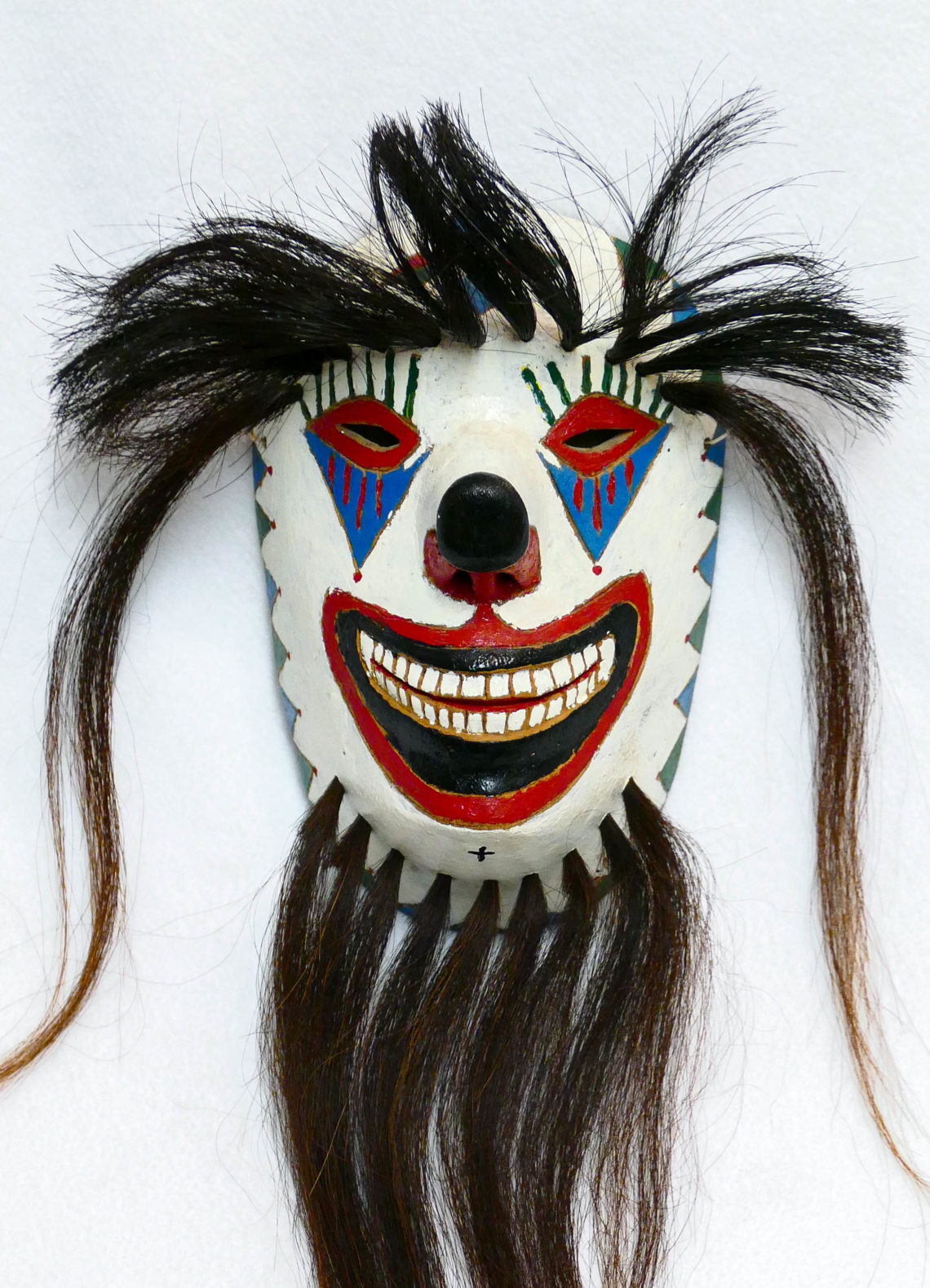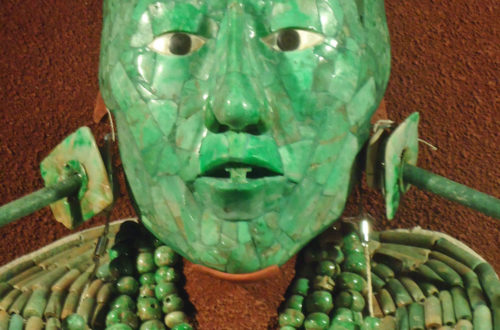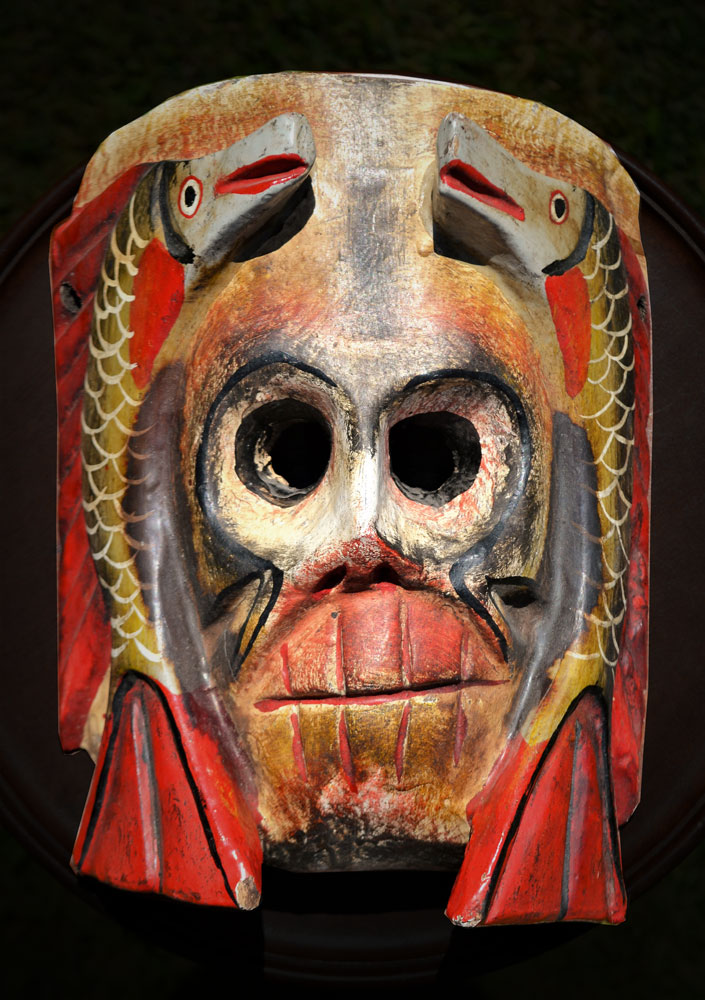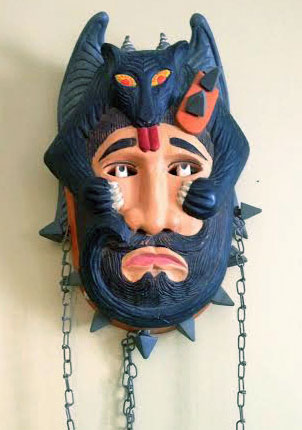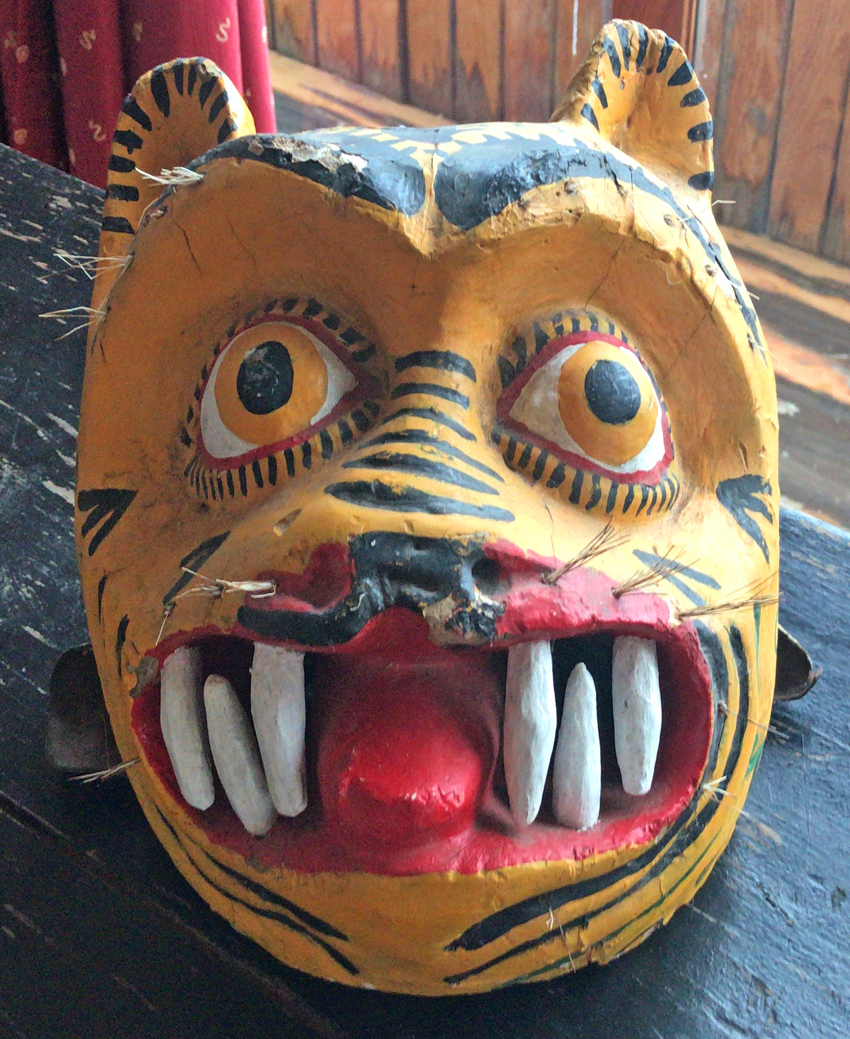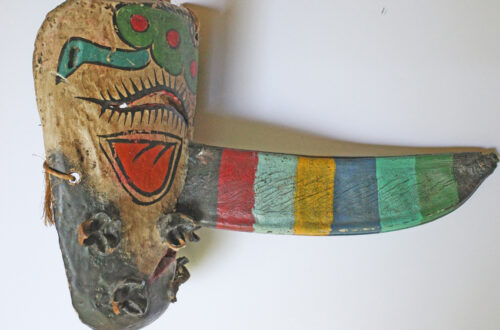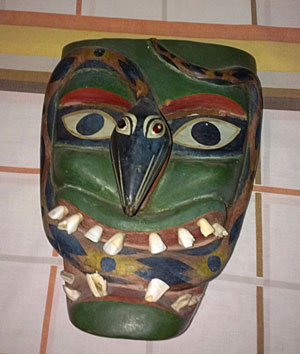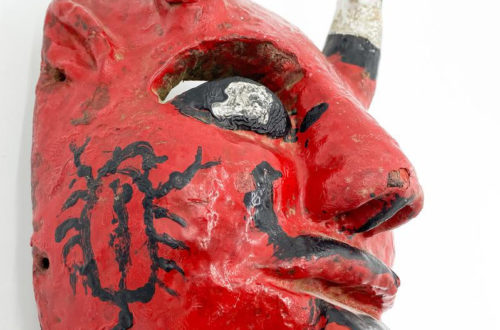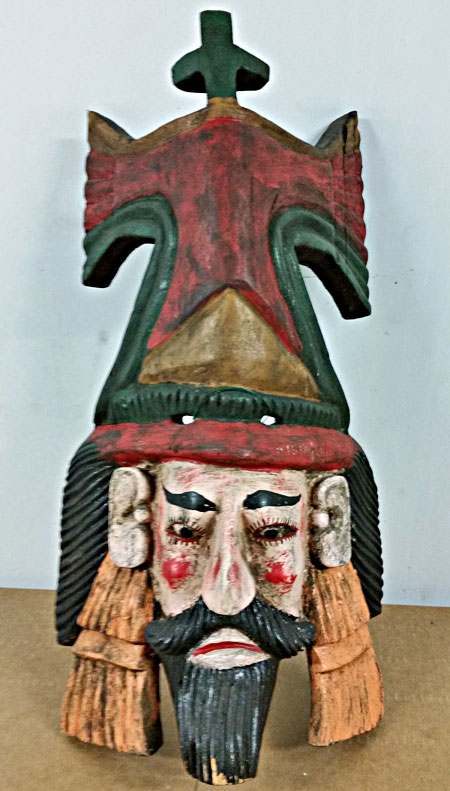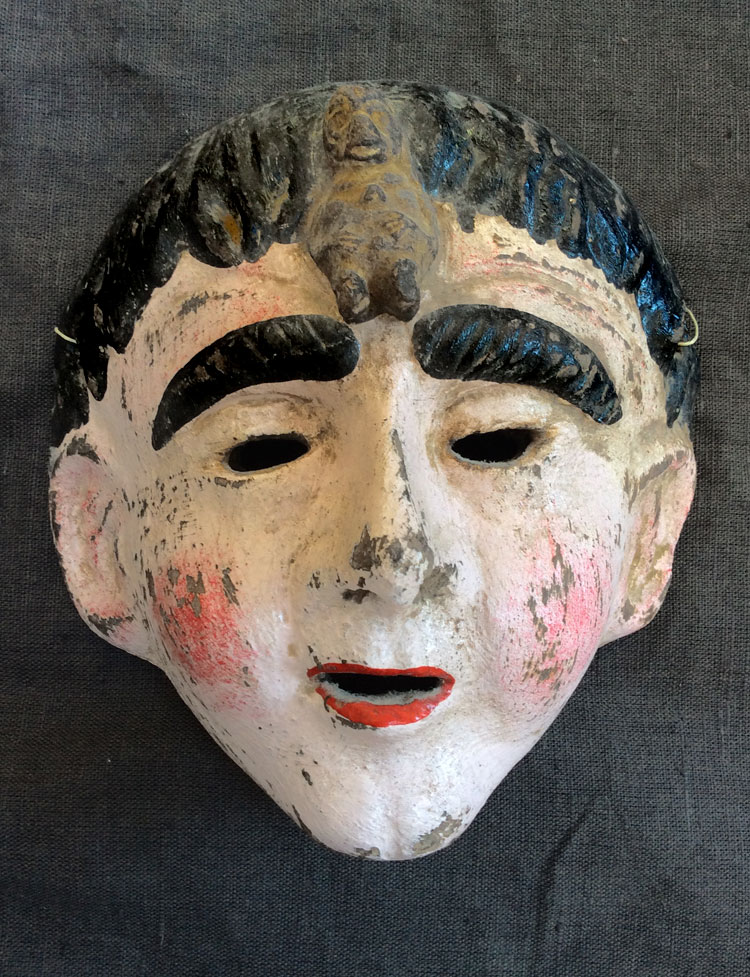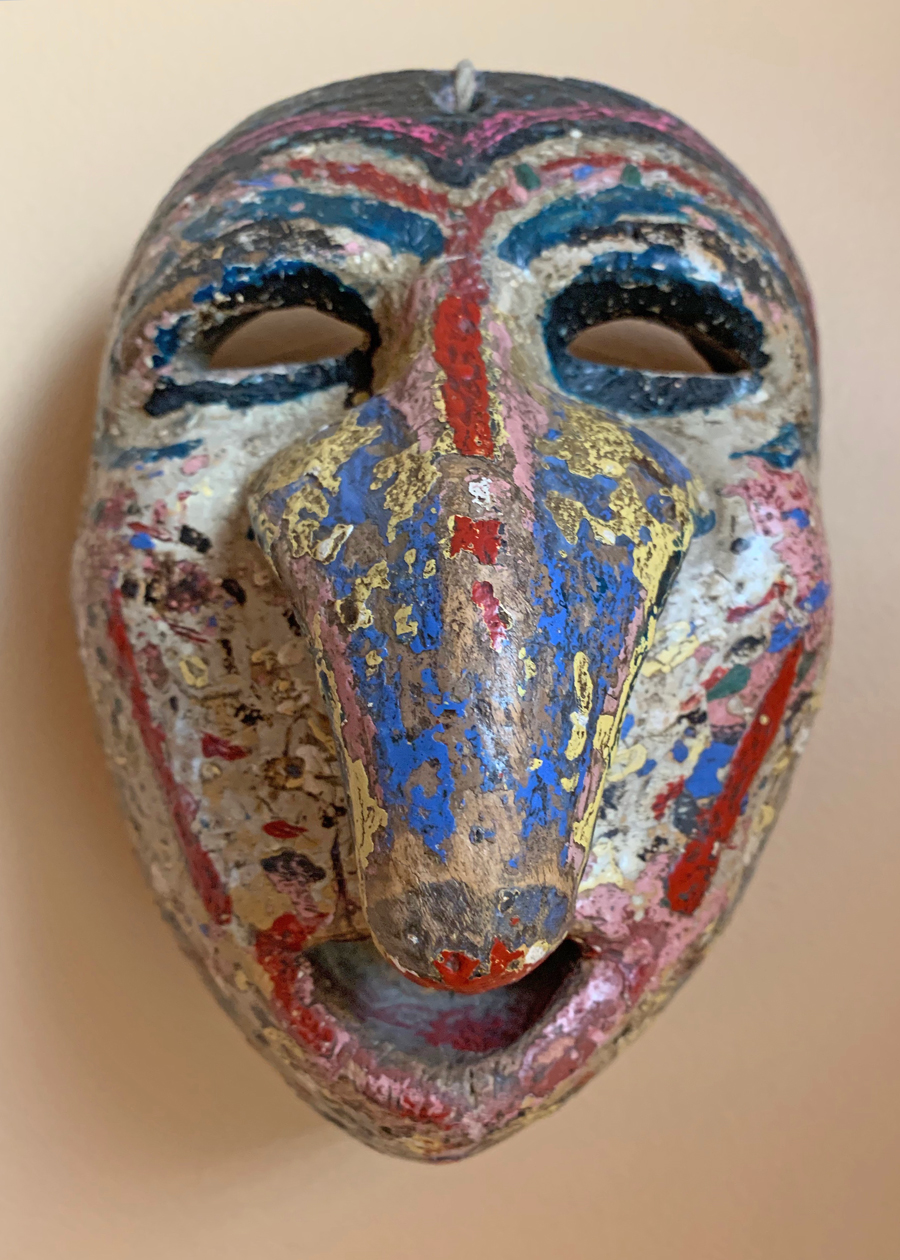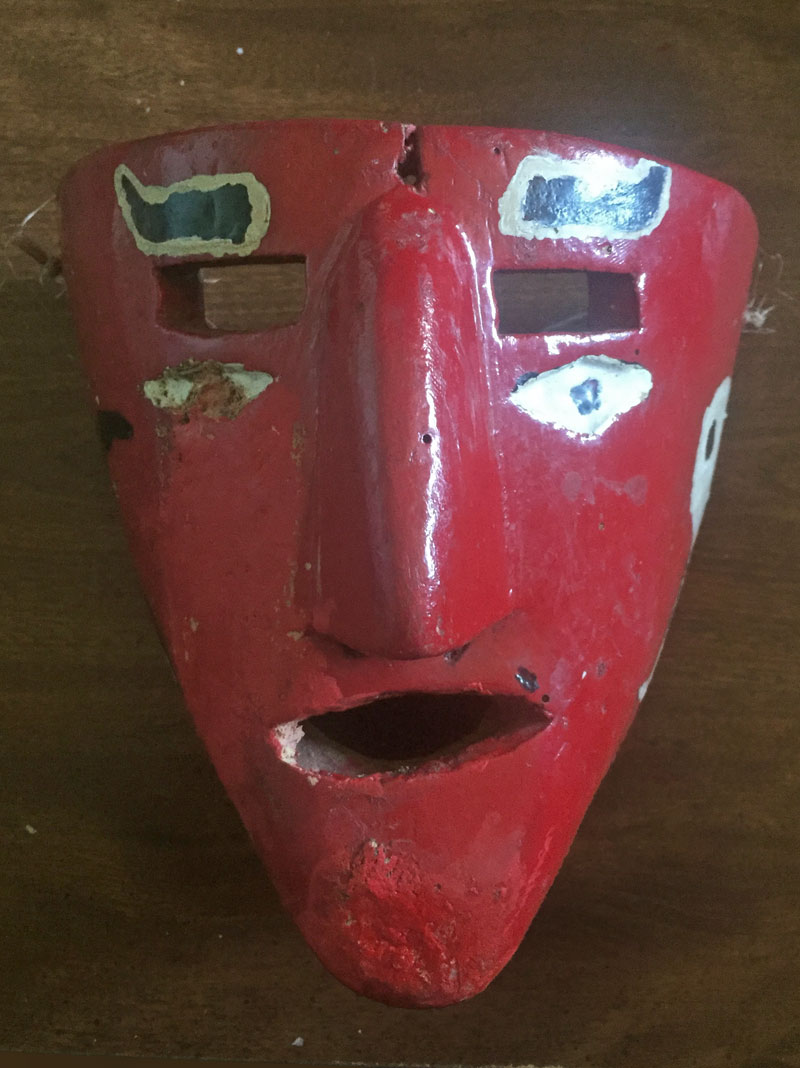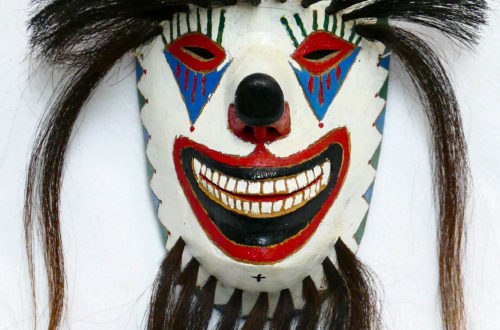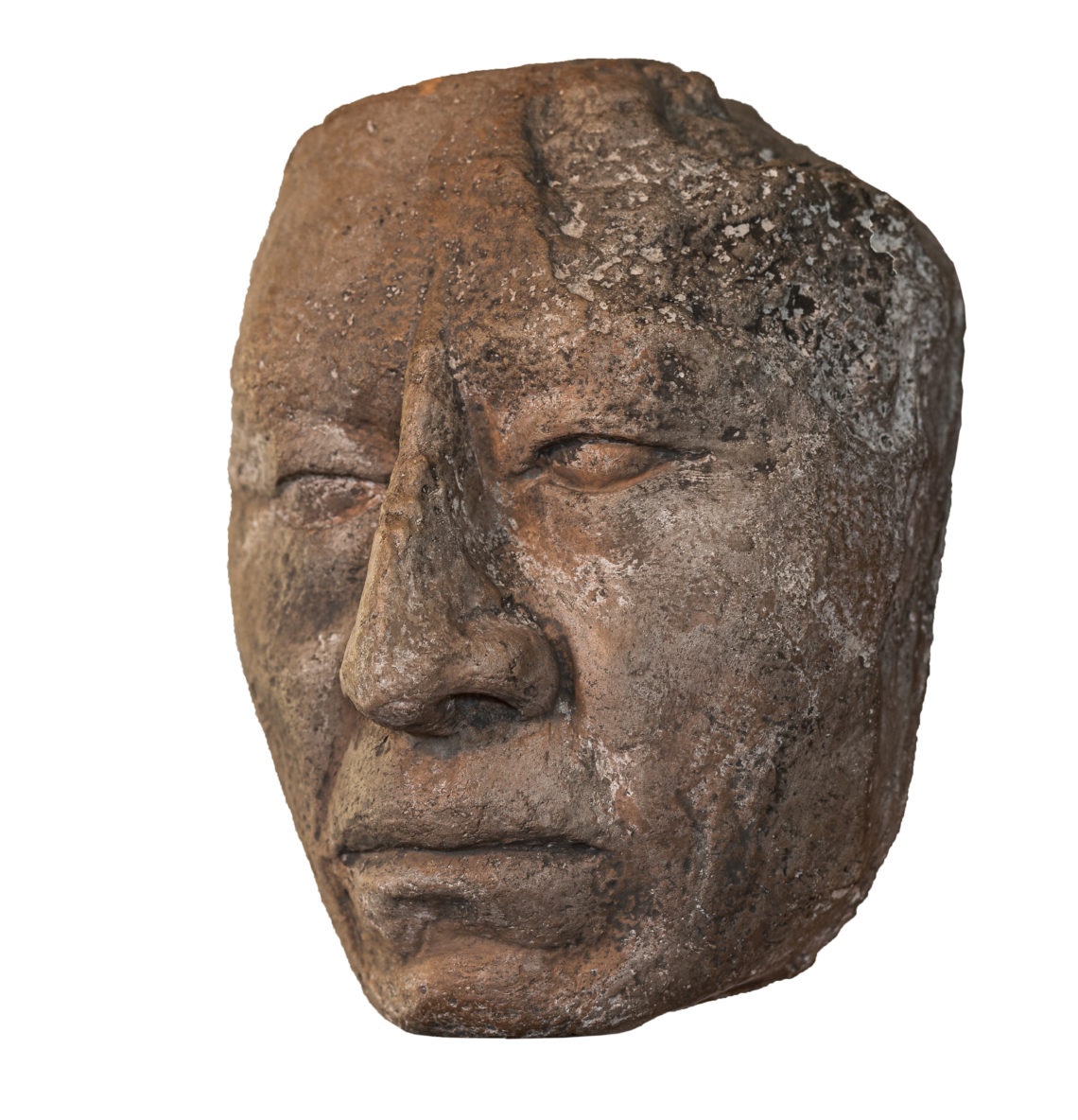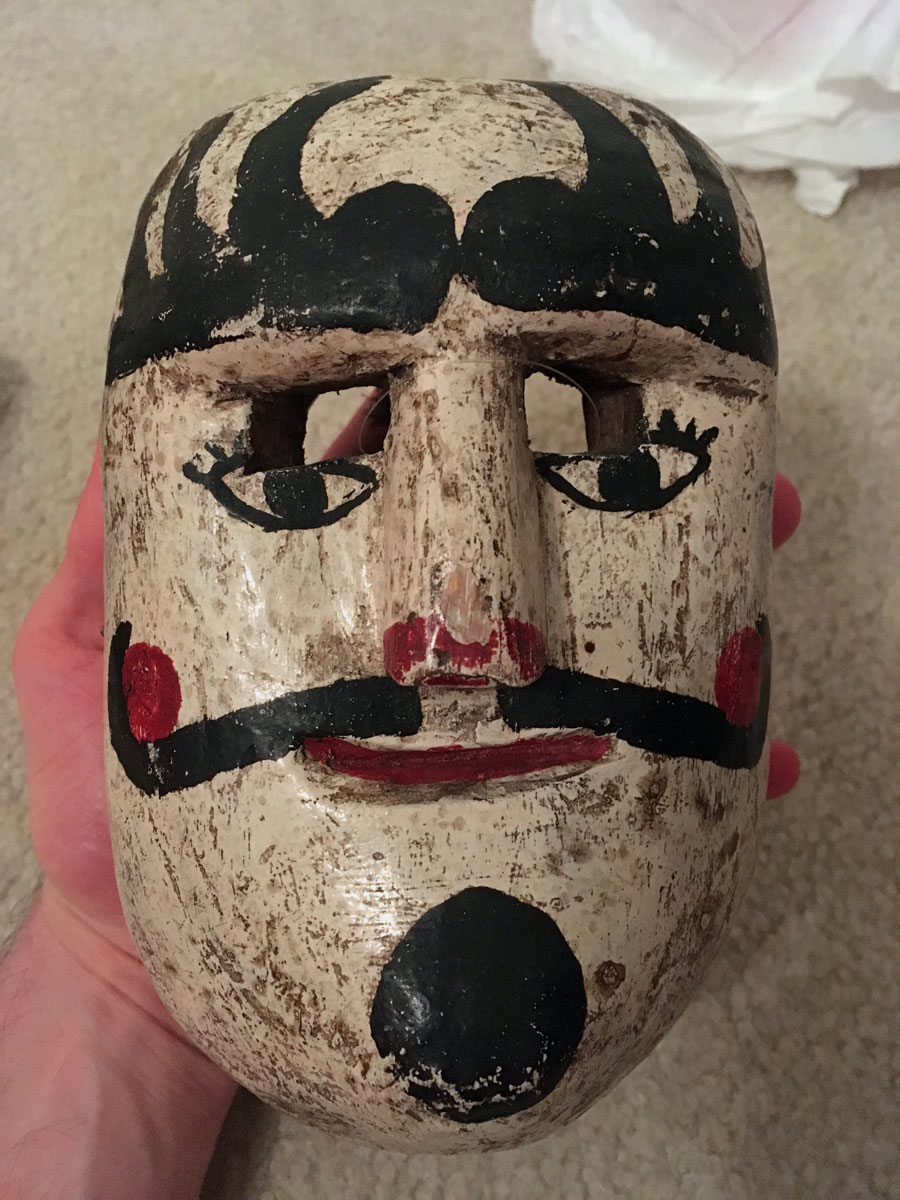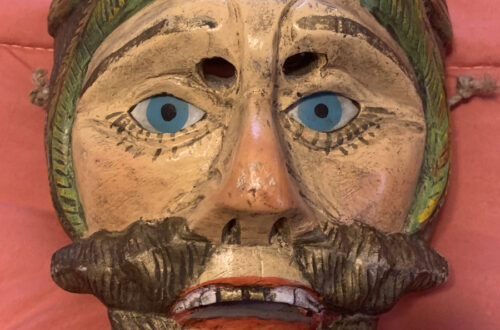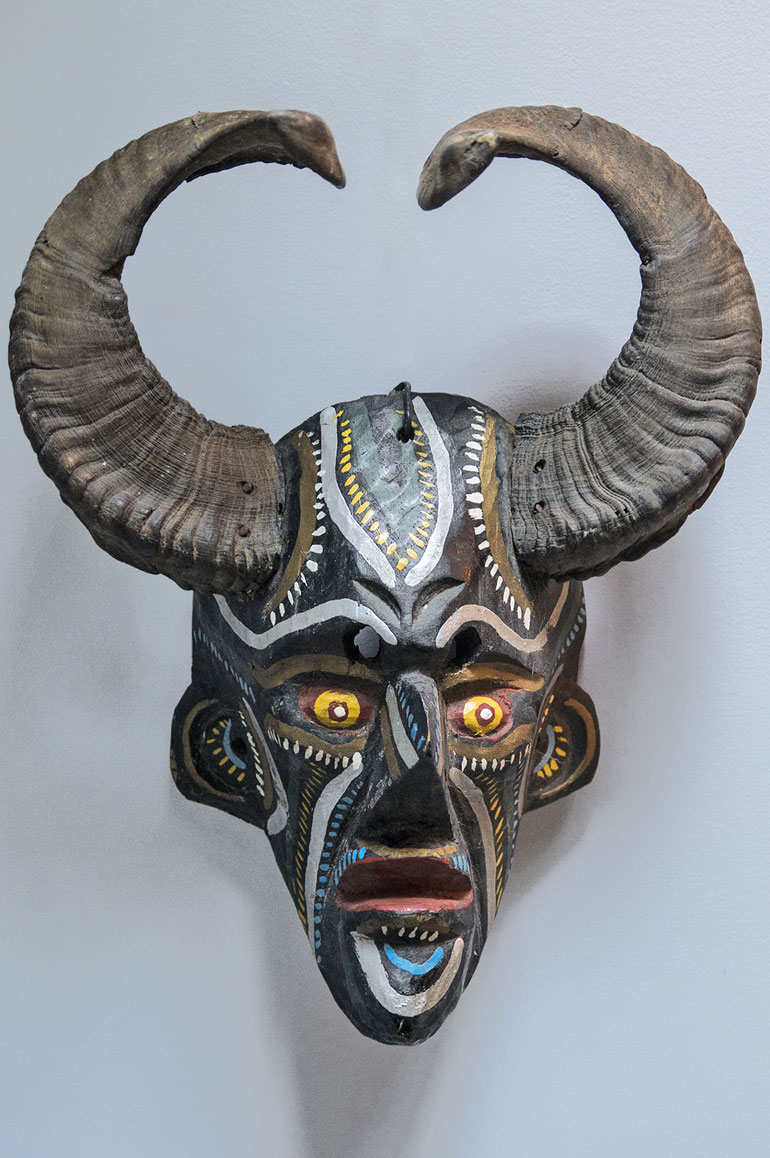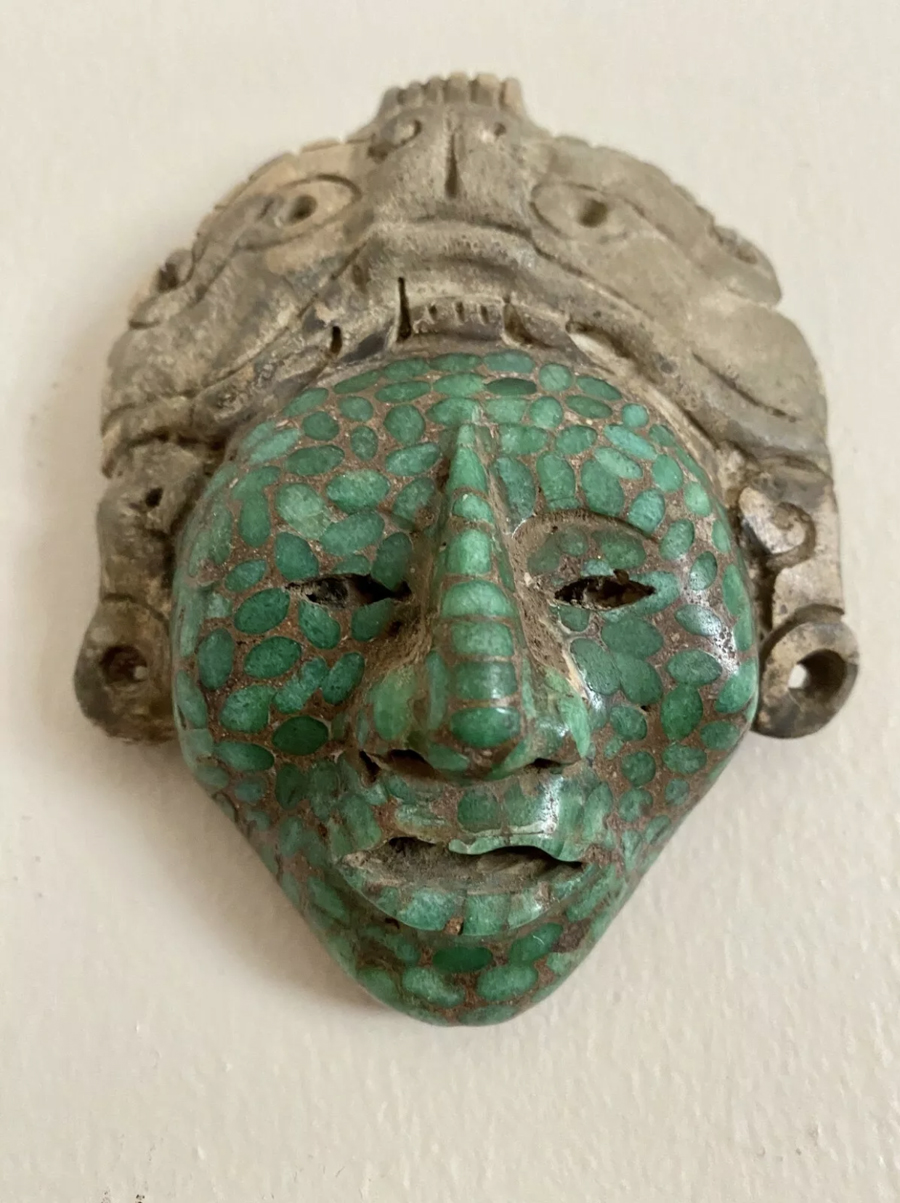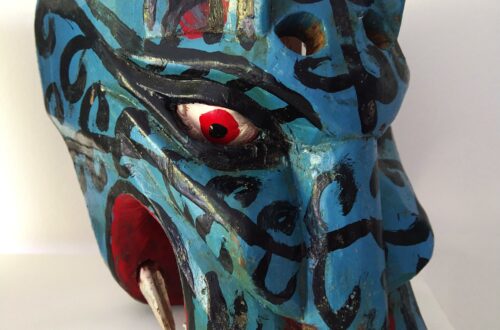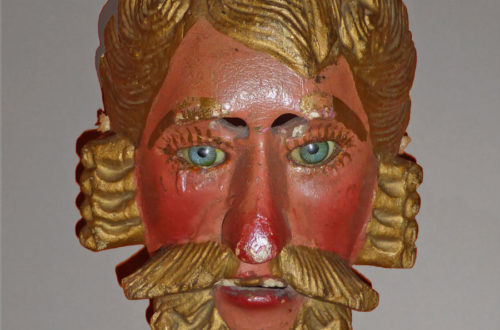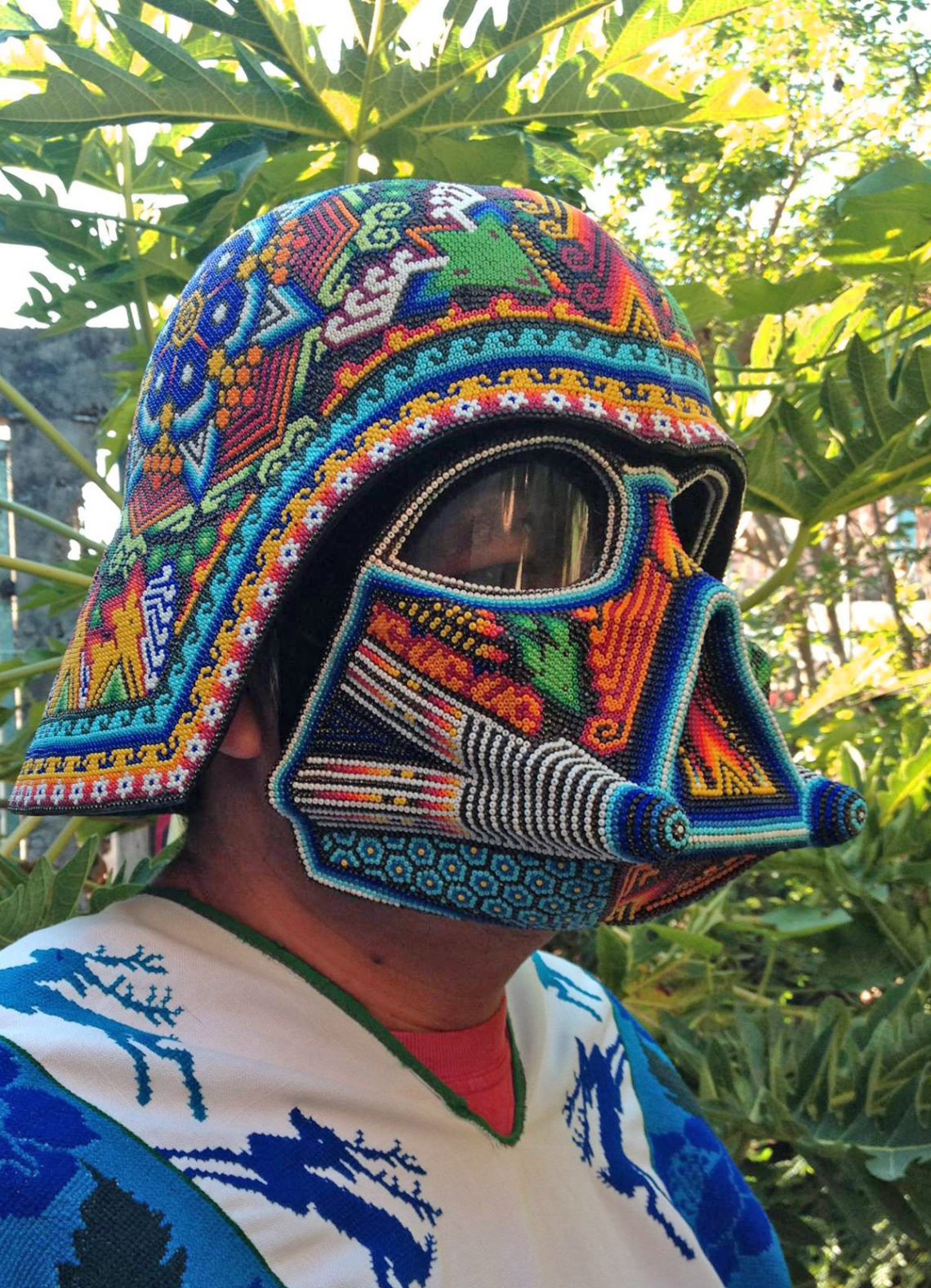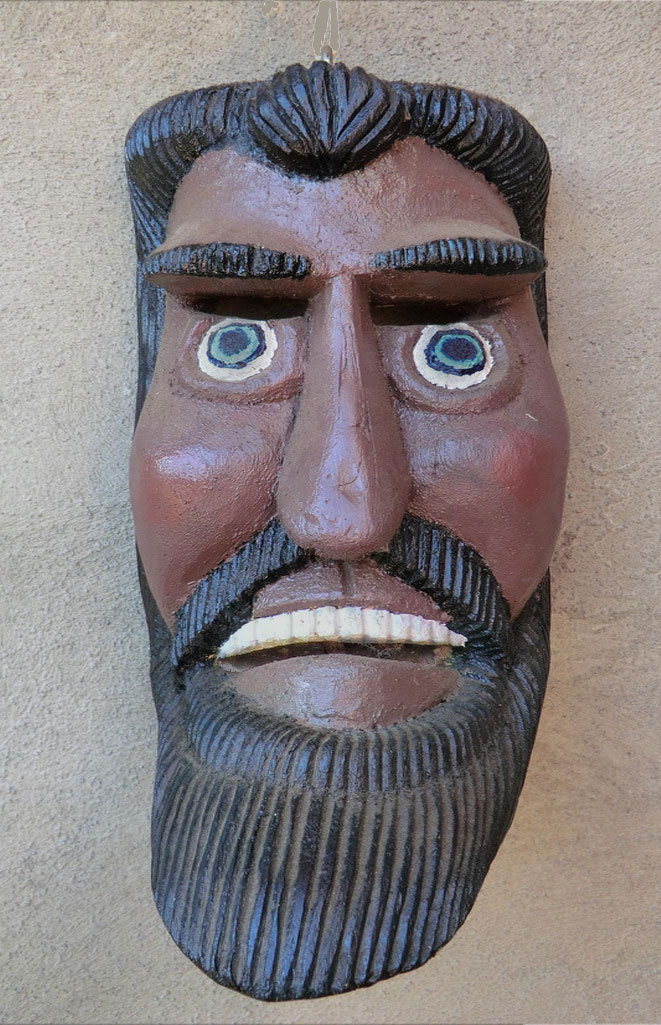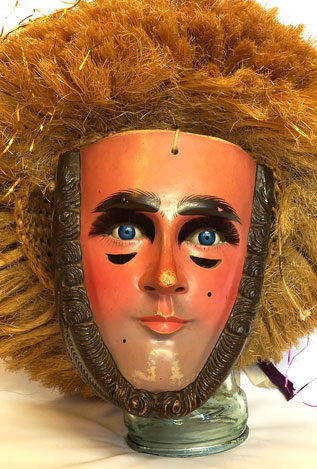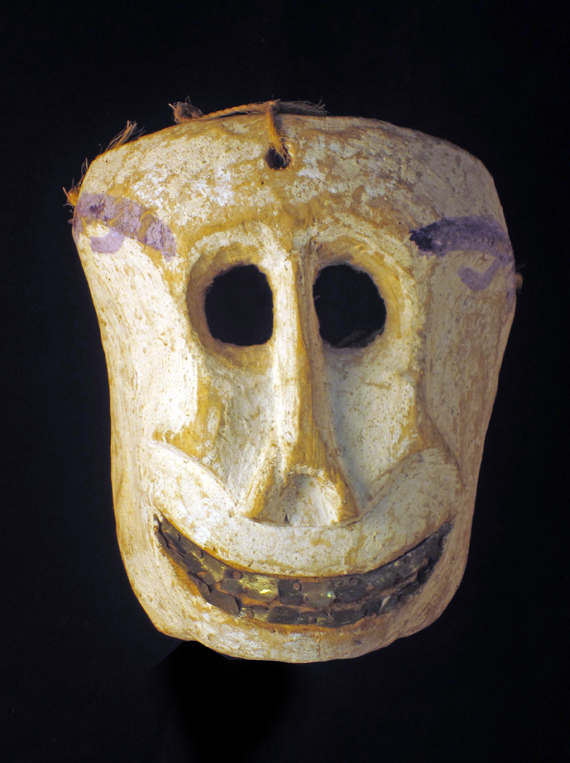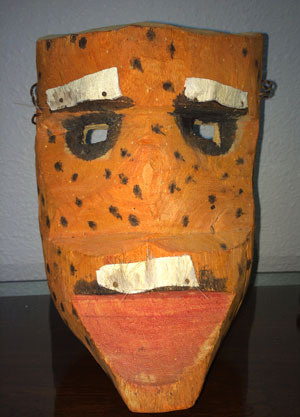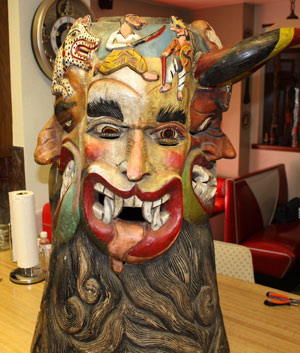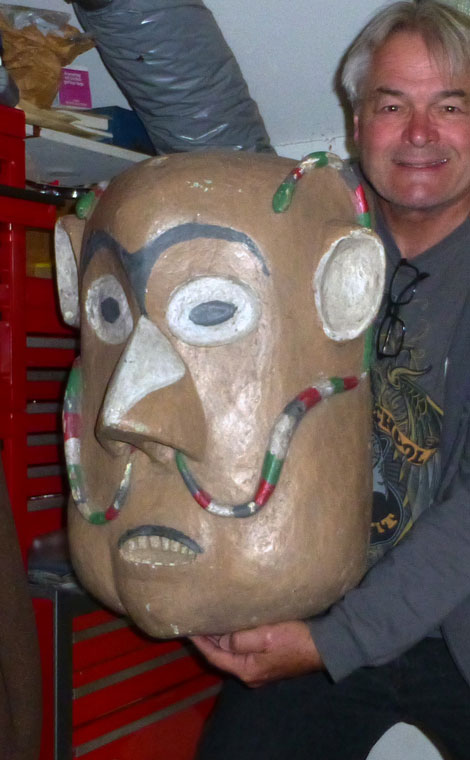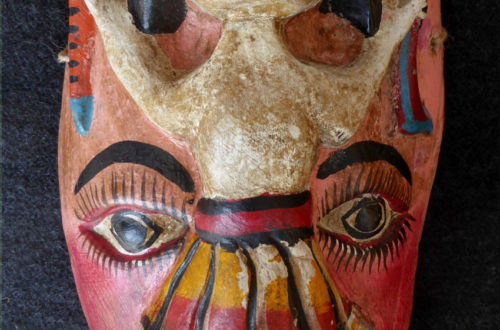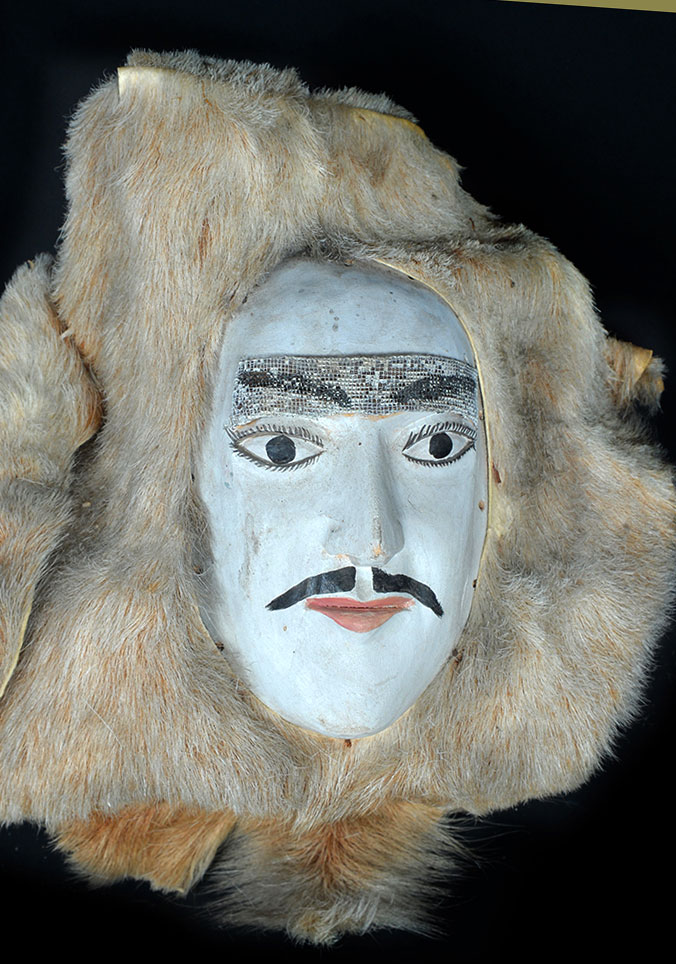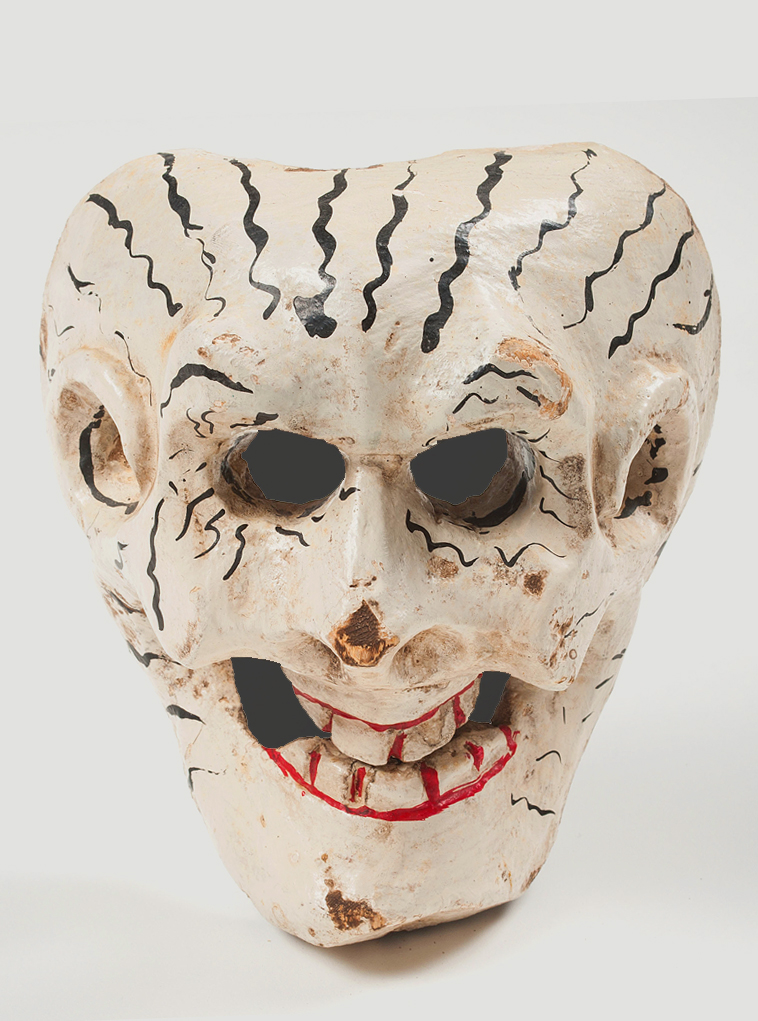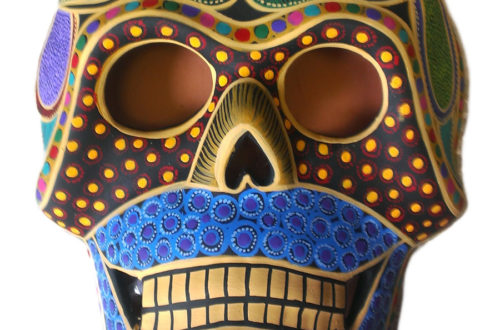Q: Just wanted to share this mask that I purchased online last year. I thought you and the folks who appreciate authentic cultural masks would enjoy seeing it. It’s a Yaqui clown or joker mask carved by Preciliano Rodriguez Cupis sometime in the 80’s. The seller provided the following information about the mask: The Mayo Indians are an indigenous group living in the Río Mayo valley in Southern Sonora and the Río Fuerte valley in Northern Sinaloa, Mexico. The pascola is the “old man of the fiesta” that is the literal translation of the Yaqui word Pahko’ola. The ceremony does not start until he enters the ramada and it ends…
-
-
Oaxacan tigre mask
Q: I bought this mask at an antique store in Oaxaca de Juarez, Oaxaca, Mexico. The owner told me it was made in Zitlala, Guerrero, but it was used at the carnival in Penotepa Nacional, Oaxaca. He did not know how old it is, but that it was ‘very’ old. (perhaps the condition of the leather on the back offers some very rough terminus ante quem. It still has the whisker and eyebrow hair made from the bristle of wild javelina. I want to get it restored somehow but don’t know where to go (I’m currently in Mexico and will likely take it back with me to New York.) I…
-
Famous old Mexican tourist mask
Q: Is my silver-plated copper mask as old as it looks? I noticed that when I tried it on and rested my chin on the chin piece, that my nose actually fitted the opening and eyes lined up perfectly. So perhaps it was actually made to be worn? Great earrings hanging cone shaped flowers with stamens inside the flowers and edge of petals gently turned back. One earring is detached and needs to be soldiered back on again. Charles, 1764 A: Some books on Mexican masks say this was used in the “Rain-petitioning dance” in parts of rural Guerrero. These large, flat masks are called Barbones (bearded old men). Made…
-
Mystery mask from Oaxaca
Q: I bought this mask in Oaxaca in 1976. I have been collecting masks since 1974 and have not seen anything quite like this. Is it a viejito? I’m at a loss. Raul, 1752 A: The state of Oaxaca, on the lower Mexican Pacific coast, makes a lot of different-looking masks. Often they are creative, but still manage to be appropriate for a traditional dance. Note the photo of a collector’s wall full of Oaxacan masks. Many of them I haven’t seen before. This crazy, big-nosed guy is a challenge for me. I have no idea what role he might play in a dance. Mexican masks are my favorites, and…
-
PreColumbian death mask of Pakal the Great
Q: The test results are ready now. Well, lets both be happy;) Would you like to evaluate now for me, considering it was real? The certificate is added. Robin, 1750 A: News this good only rarely happens at MasksoftheWorld.com. I am so pleased. Viewers can see Robin’s original Q & A dated March 21 of this year by typing in “death mask.” You could also visit sometime Palenque and Mexico City where you will find the burial pyramid and a recreation of the king’s burial chamber at the Museum of Anthropology. Pakal was buried in a colossal sarcophagus in the largest of Palenque’s stepped pyramid structures, the building called Bʼolon…
-
Pre-Columbian Indian mask
Q: Does this mask look like a repro or a legitimate Mexican pre-Columbian piece. It is 3” x 5”. Is is jade adhered to pottery on a wooden base. Paula, 1739 A: It’s a beautiful piece that shows you what an Mezcala, Olmec or Mayan masks could look like before the Spanish invaded the new world. Otherwise, I can’t help much because I never got around to learning about early MesoAmerican masks. The big question is whether it is authentic or a recent reproduction. Please don’t sell it until you know for sure. There are labs that can tell you the age of the mask.
-
Huichol mask from Mexico
From Austria to the Amazon, masks bring out the impulses of creative art. In my favorite foreign country, Mexico, there is an indigenous group living in the remote states of Jalisco, Durango, Zacatecas and Nayarit… called the Huichol. They have a long history of beading, making the beads from clay, shells, corals, seeds and more. In the middle of the 20th century they started to make wood masks covered in small, brightly colored commercial beads fastened with wax and resin. While the materials have changed from natural to commercial, the designs have changed a little, and many retain their religious and symbolic significance. Many outsiders experience Huichol art as tourists…
-
Mexican tin mask for tourist
Q: I used to create various tribal masks, sometimes with metal and allied items. Please look at this sample for your reference. Sanjay, 1714 A: This tin mask is well made and represents a high-ranking Aztec. These masks have been made for visitors to Mexico for years. As you can see, they are hard to resist. Mexican maskmakers sell thousands every year, most of which are quite different from each other. I wonder if Sanjay can reproduce a metal Bolivian mask. They would be much more difficult. A beautiful example is shown in the second photograph. Masks of this kind were made for the Diablado (Dance of the Devils) that…
-
Authentic Mexican devil mask
Q: I’m not sure what we are going to do with the collection yet. We are trying to get them identified and appraised. I’ll look to see if there’s any paperwork on any of them. Jodie, 1703 A: A red devil with horns is one of the most common characters in masquerades all over Mexico. Though quickly made by a carver with limited training, this mask has lots of personality. It has also been danced a number of times in Zampango, Guerrero, and is now about 70 years old. Usage in culture, rather than for sale to tourists and artificially aged to increase value, this mask is more desirable to…
-
Decorative Day-of-the-Dead mask
If this mask was actually used on an offering table, in a dance or ceremony, it would be considered authentic. This is often the the case with Mexican masks because the village carvers usually sell their extra masks to tourist and shop keepers. Some of you know I have long been a big fan of Mexican masks. Whether the carver is a well-trained professional or a part-timer in a country village, they like to express themselves. This guy wants to have a little fun with his quickly carved skull. The next one he makes may be quite different. But he always is expressing his feelings. Cultural traditions are often followed,…
